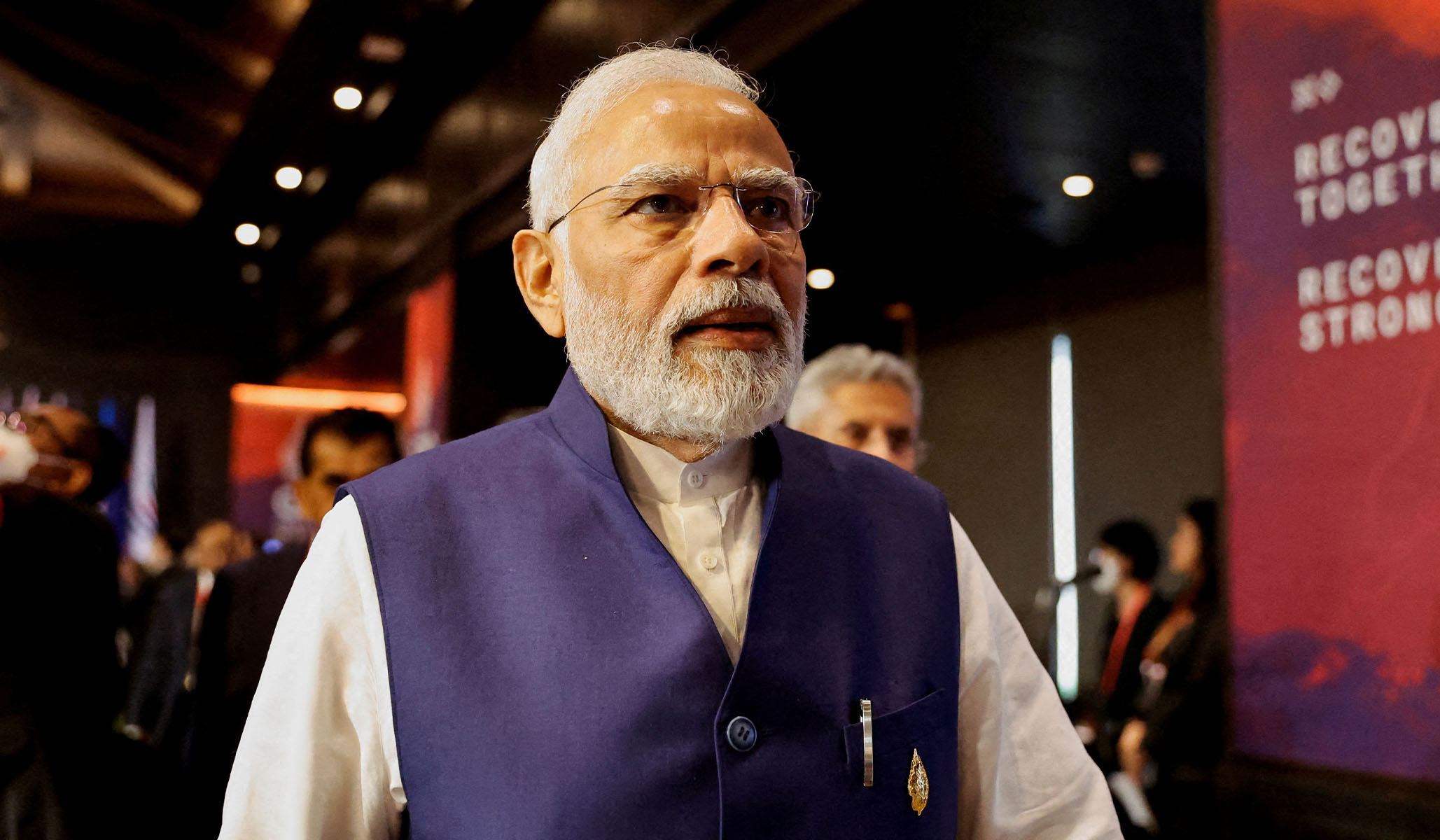


Washington — Ahead of Indian prime minister Narendra Modi’s state visit next week, Senators John Cornyn (R., Texas) and Mark Warner (D., Va.) spoke Tuesday about the prospects of U.S.–Indian relations at the U.S. Chamber of Commerce. One thing they both think will bring the countries closer together is a common adversary: China.
“China has more troops based on the Indian border than Russia has used to invade Ukraine,” Warner said. On a visit to India in February, Warner said an Indian official told him India’s three biggest challenges: “Number one is China, number two is China, and number three is China.”
Cornyn noted the problems many businesses are having as the Chinese Communist Party increases its influence over commerce and reduces transparency. “It’s harder and harder for fiduciaries and others to know what’s happening with their investments in China, and it seems like India is a good alternative,” he said.
Considering their common adversary in China, Cornyn sees more potential for U.S. cooperation with India on defense. “India doesn’t just want to buy our stuff, they want to be able to build it too, but they will do it in partnership with us,” he said.
The U.S.–India Business Council hosted the India Ideas Summit at the Chamber of Commerce Building under the theme “Trust, Resilience, and Growth.” Now the world’s most populous country, India is also projected to be the fastest growing major economy in the next few years. As part of the Indo-Pacific region that is increasingly the focus of U.S. foreign policy, India will become more important to U.S. commercial and political interests going forward.
Cornyn and Warner are the cochairmen of the Senate India Caucus; Cornyn founded it with then-senator Hillary Clinton in 2004. The senators expressed their concerns with some aspects of Indian policy. “One thing that was a little bit disappointing is that when Russia invaded Ukraine, India took a pass,” Cornyn said. He noted that India’s closeness with Russia historically has not been based on shared values, but rather on dependence for weapons.
“As a great nation, as a great democracy, I hope we will hear from the prime minister, because he is so popular, a recommitment to the rule of law,” Warner said, referencing recent “actions taken against some Congress Party leaders.” He’s likely alluding to the defamation trial against Indian National Congress leader Rahul Gandhi, who was expelled from parliament over his conviction on charges of defaming people with the surname “Modi.”
Both Cornyn and Warner said they are looking forward to Prime Minister Modi’s state visit next week, when he will meet with President Biden and address Congress. “I think this visit is a very important symbol of our growing more closely together. Obviously, India wants to maintain its strategic independence, as it always has,” Cornyn said.
Warner said it’s becoming common for Indians under the age of 40 to see their country’s interests as more closely aligned with the U.S. than elsewhere. He said that in a conversation with an Indian official, “He said he did not know a single Indian citizen who was trying to get a visa to move to Russia or move to China.”
Despite the present challenges surrounding foreign policy and free speech, Warner and Cornyn were optimistic about the future. Warner said on his recent trip to India that leaders were more confident than on previous visits. “Always in the past, India was viewed as an aspiring nation. My last visit, I felt like India’s time has arrived.”
Between 2005 and 2021, the number of Indians in multidimensional poverty, as defined by the United Nations Development Program, declined by about 415 million. The decline as a share of the population was from 55.1 percent in 2005 to 16.4 percent in 2021.
The Indian government has set the goal of becoming a high-income economy by 2047. That would imply roughly 7 percent annual growth for a generation. It’s not impossible, but it would be very impressive and would require significant economic reforms. Despite major market reforms in the early 1990s that spurred enormous growth, India still suffers from the “regulatory cholesterol” of its socialist past, low levels of education, and low labor productivity. As of 2021, 44 percent of Indian workers are still employed in agriculture, far above the low-single-digit levels that characterize developed economies.
Americans are seeing some of the early signs of India’s increased global cultural presence. The 2022 Telugu-language film RRR won awards worldwide, including the Academy Award for Best Original Song. A new franchise cricket league is starting in the U.S. this year, with a focus on cities with high Indian-American populations. And India leads the world in digital-payments technology, with a recent report finding that India was responsible for more digital transactions than the next four countries combined.
Cornyn and Warner held a realistic outlook on U.S.–Indian affairs. Significant challenges remain, and they need to be worked out, but the room for growth is enormous, and existing trends favor closer relations and greater prosperity.
